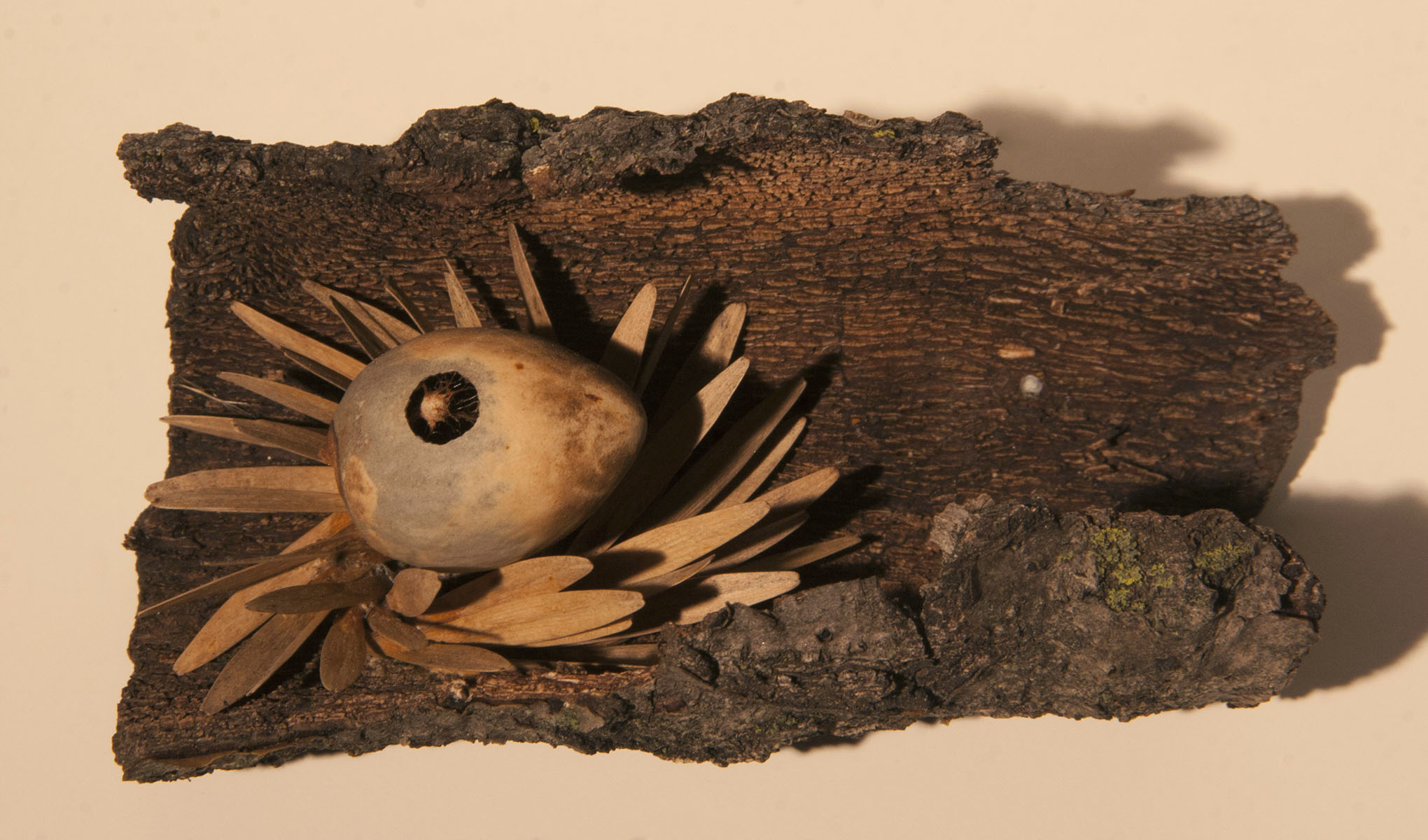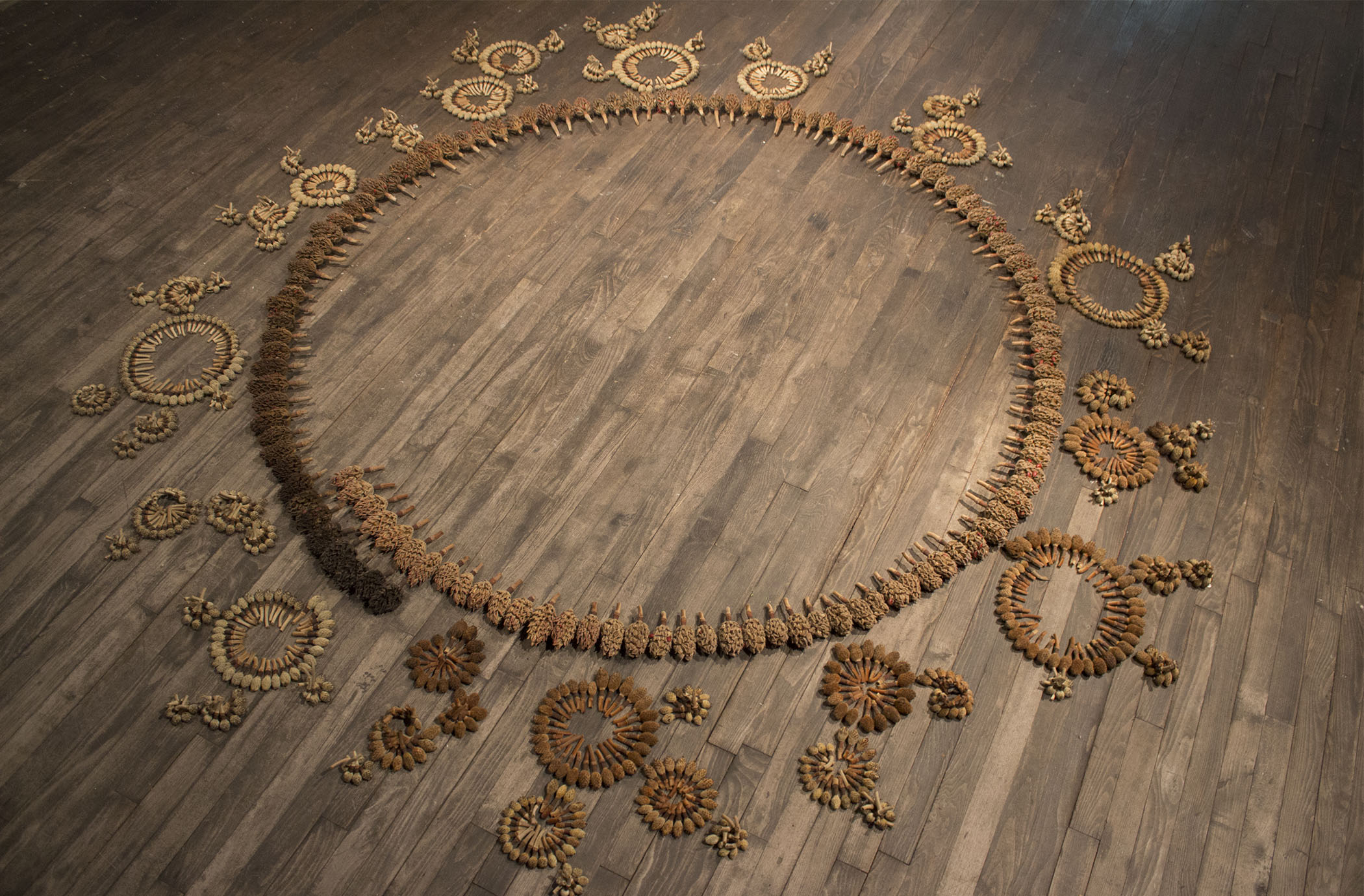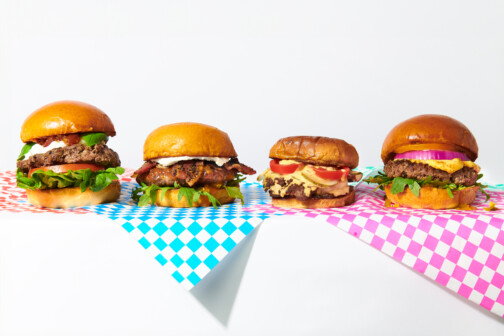Rachel Muldez has built an art practice on extreme environmentalism, creating miniaturized sculptures and enormous “floor drawings” out of found objects from nature: bird nests, seed pods, and wasp dens, to name a few ingredients.
Her assemblages, delicate whispery sculptures, are shrouded safely under glass in her gallery on Davis Street in Oak Cliff. She puts them together using a cacti needle, because tweezers would be too heavy-handed for the job. Muldez moved away from using man-made ingredients years ago. Even the adhesive that holds the sculptures in place is natural—chia seed goo, in fact—a perfect role for the byproduct of those unassuming seeds, as anyone who’s eaten them can attest.
“I had this nature-loving message, oftentimes [highlighting] nature’s cry for help,” Muldez says. “I felt like in the back of my mind I was adding to the problem by putting more plastics out there, making rubber, in some cases, that would never biodegrade. I was going in the wrong direction.”
The rubber-infused piece she references dates back to 2011 in a sculpture called “The Amputee,” a rendering of the inner musculature of a human arm superimposed on the cut ends of real wood logs. It’s not gory, but it is shocking. “It looks like a cut-open human body,” Muldez says. The connection? “A tree lost its life to become a pile of wood.”
Art critic Ryder Richards wrote of it: “[It’s] an anthropomorphized and didactic reminder of our planetary destruction, yet the work remains disgusting and darkly humorous, overcoming its preachiness through craftsmanship and humor.”
After that, Muldez looked to her own routine to revamp her art practice and began using only natural substances. “I eat a lot of chia,” she says with a laugh. “I was washing dishes one day. It’s always a pain in the tail to get these chia seeds off, and I realized they could be used as a glue.”
Her devotion to environmental integrity means that Muldez doesn’t harvest anything that’s still living or in-use. She picks up her objects on nature walks, which she takes daily through nearby wildlife areas like the Cedar Ridge Nature Preserve, or in more urban locales. Highland Park and Turtle Creek are the harvesting grounds for her enormous collection of magnolia seed pods, the basis for her giant floor drawings.
“I meditate before going on every nature walk,” she says. “Once I feel like I’m one with everything, I go out into nature and I can hear things better and see more living things and what they produce. I’m drawn to the things in nature, made by living things that could be art themselves.”

Her practice could sound a little “out there” to some, but Muldez’s earth-mother attitude is anything but hippie-dippy. Muldez once planned on becoming a medical doctor, but her love of nature developed as a child growing up in New Mexico and branched off into an interest in art when she began studying for her undergraduate degree. She went on to earn three master’s degrees in various art practices. One of her degrees is in ceramics, which she has taught at Richland Community College since 2013.
Back in her Bishop Arts studio and gallery, she’s soft-spoken and reserved, yet completely self-assured, a commanding force in the quiet space. Walking into the room is a bit like entering a mausoleum dedicated to nature. It’s dimly lit in the late afternoon. Items are catalogued and preserved for eternity. The grey concrete floor and white gallery walls offer a hard-edged contrast to the pillowy softness of her sculptures. Its stillness is comforting.
The space is flexible, meaning that in August, Muldez will co-host another type of art show with the owner of the building, artist Art Garcia, who keeps his own studio and gallery in the rooms opposite Muldez’s. Opening Aug. 10 at the Davis Foundry Gallery and running through the end of the year, Everybody Was a Kid will exhibit the childhood works of some of Dallas’ most notable artists.
Muldez’s childhood art will be in the show—pottery she made from the New Mexico earth. After playing in the mud and gathering clay for her pottery, she relates that her clothes would be just as pristine as when she left her house in the morning. Apparently, she was conscientious even as a kid. Her mother sat her down and told her it’s okay to get dirty. And well, the rest is history.






